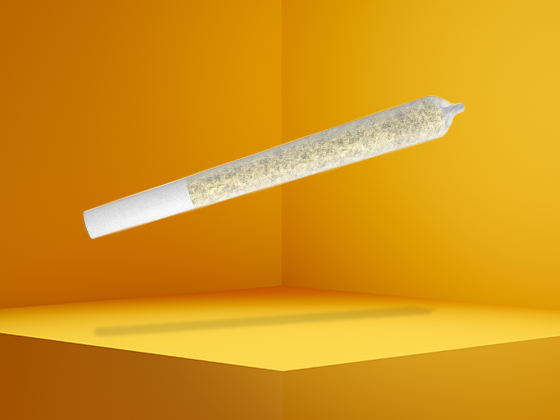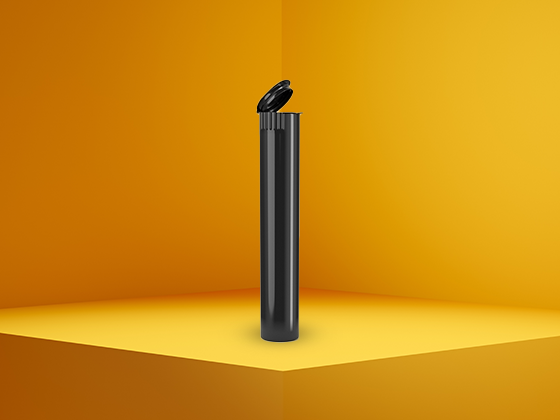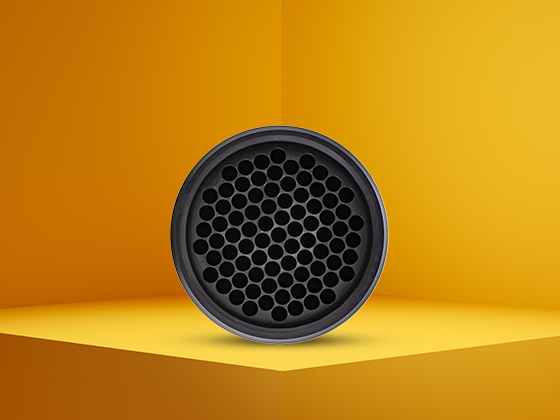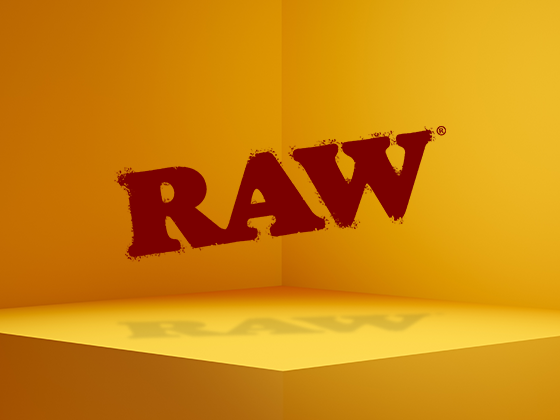Questions
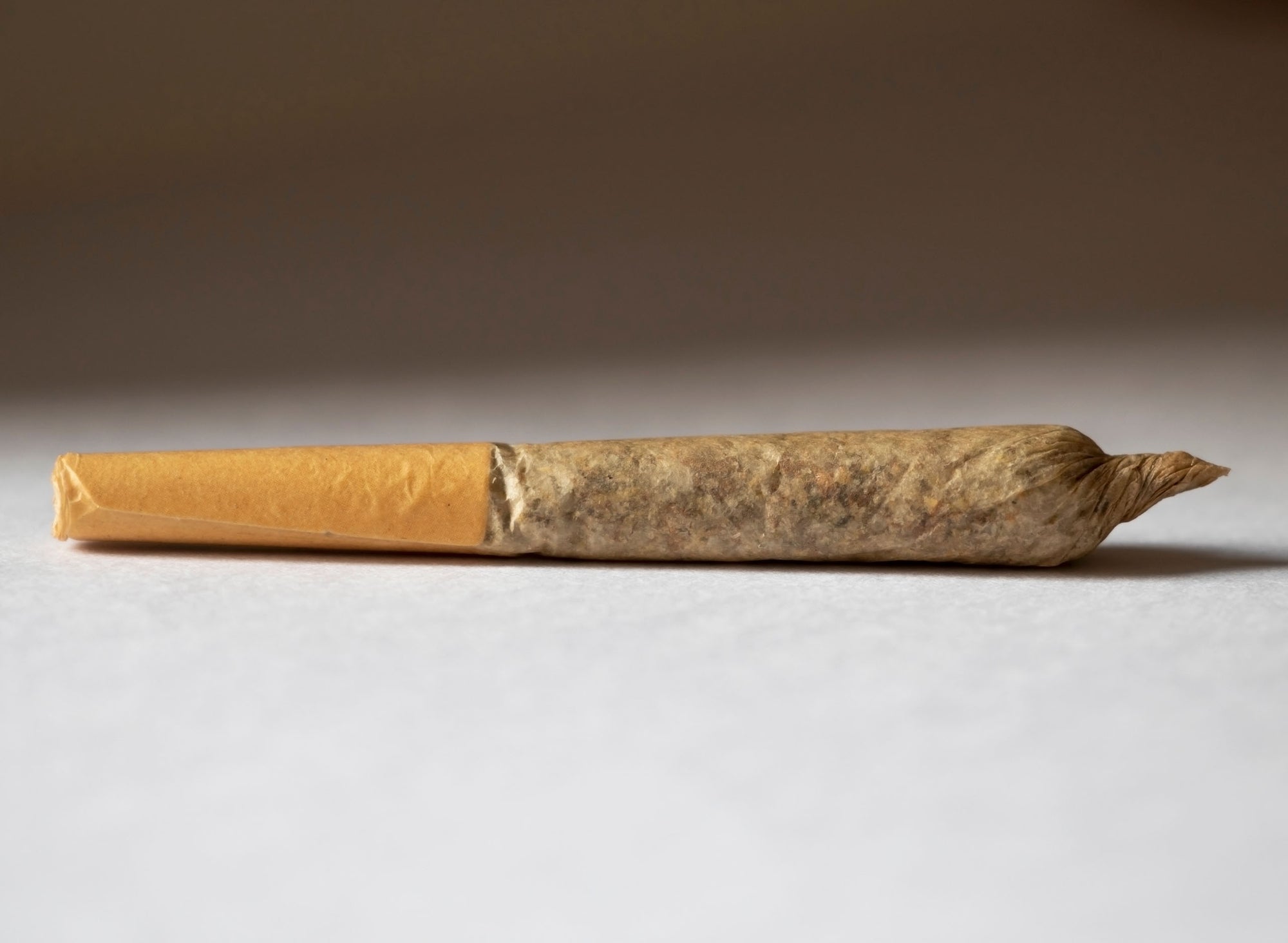
compliance
Are RAW Organic Papers Safe? Exploring the Ethylene Oxide Controversy
Table of Contents
Understanding RAW Organic Papers: Composition and Claims
The Ethylene Oxide Controversy: What You Need to Know
Testing Standards and Regulatory Oversight
Alternatives to RAW Papers for Health-Conscious Consumers
Making Informed Choices: Balancing Tradition and Safety
Are RAW Organic Papers Safe? Exploring the Ethylene Oxide ControversyThe cannabis and tobacco accessory market has seen significant growth in recent years, with RAW rolling papers emerging as one of the most popular brands among consumers. Known for their unbleached, natural appearance and marketing claims of organic materials, RAW papers have developed a loyal following. However, recent controversies surrounding ethylene oxide in RAW papers have raised questions about their safety and organic status.Understanding RAW Organic Papers: Composition and ClaimsRAW organic papers are marketed as all-natural rolling papers made from unbleached plant fibers. According to the brand, these papers are created using organic hemp and processed without chlorine bleach or other chemicals typically found in conventional rolling papers. This natural approach has been a key selling point for health-conscious consumers looking to avoid potentially harmful additives.The composition of RAW papers typically includes:
Unrefined hemp fibers
Natural plant gum (typically Arabic gum) as an adhesive
No added chemicals or dyes
As explained in this comprehensive guide to RAW papers, the brand has built its reputation on these natural credentials and transparent manufacturing processes.The Ethylene Oxide Controversy: What You Need to KnowDespite RAW's claims of organic and natural production, concerns have emerged regarding the potential presence of ethylene oxide in their papers. Ethylene oxide is a gas used for sterilization in many industries, including medical equipment and some food products. It's classified as a carcinogen by multiple health organizations, including the International Agency for Research on Cancer.The controversy stems from allegations that RAW papers might undergo ethylene oxide sterilization to eliminate microbial contamination before packaging. If true, this would contradict the brand's organic claims, as ethylene oxide sterilization is not permitted in certified organic products in many jurisdictions.Highlight: The core of the controversy lies in whether ethylene oxide sterilization leaves harmful residues in the papers that could be inhaled when smoked, potentially exposing users to carcinogenic compounds.Industry Response and TestingIn response to these concerns, many consumers have begun exploring different types of RAW papers or alternatives altogether. RAW has publicly denied using ethylene oxide in their manufacturing process, but the controversy has prompted increased scrutiny of rolling paper production methods industry-wide.Testing Standards and Regulatory OversightOne challenge in addressing these concerns is the limited regulatory oversight of rolling paper production. Unlike food or pharmaceutical products, rolling papers often fall into regulatory gray areas with minimal testing requirements.Some third-party testing has been conducted on various rolling paper brands, including RAW, with mixed results. These tests typically look for:
Heavy metals
Pesticide residues
Chemical additives
Potential carcinogens
For consumers concerned about potential contaminants, looking for papers that undergo third-party testing and publish their results can provide additional peace of mind. Some enthusiasts have also turned to our selection of OCB cones as an alternative, which many users find to be manufactured with rigorous quality control standards.Alternatives to RAW Papers for Health-Conscious ConsumersFor those concerned about the ethylene oxide controversy surrounding RAW papers, several alternatives exist in the market:Other Organic and Natural OptionsSeveral brands offer unbleached, natural rolling papers that compete directly with RAW organic papers. These include OCB Organic, Elements, and Pure Hemp, among others. Each has its own manufacturing processes and quality control standards.As detailed in this analysis of RAW Black papers, even within the RAW family, different product lines may use varying production methods and materials.Pre-Rolled ConesPre-rolled cones eliminate the need for rolling skills and often come from the same manufacturers as flat papers. Many consumers find that RAW cones provide the same experience as the flat papers but in a more convenient format. These products are subject to the same considerations regarding materials and processing.Alternative Consumption MethodsSome consumers have moved away from combustion entirely, opting for vaporizers or edibles to avoid any potential issues with rolling papers. This approach eliminates concerns about paper composition altogether.Making Informed Choices: Balancing Tradition and SafetyThe ethylene oxide controversy highlights the importance of transparency in manufacturing processes for cannabis accessories. While definitive evidence regarding ethylene oxide in RAW papers remains limited, the controversy has sparked important conversations about safety standards in the industry.For consumers looking to make informed choices:
Research brands that provide detailed information about their manufacturing processes
Look for third-party testing results when available
Consider papers that have organic certification from reputable organizations
Explore different rolling techniques that might reduce paper consumption
As the industry evolves, increased consumer demand for transparency will likely drive more rigorous testing and clearer labeling practices. Until then, staying informed about potential concerns and exploring various options remains the best approach for health-conscious consumers.Whether you choose to continue using RAW organic papers or explore alternatives like those available through specialized retailers, understanding the manufacturing processes behind your smoking accessories empowers you to make choices aligned with your personal health priorities and values.
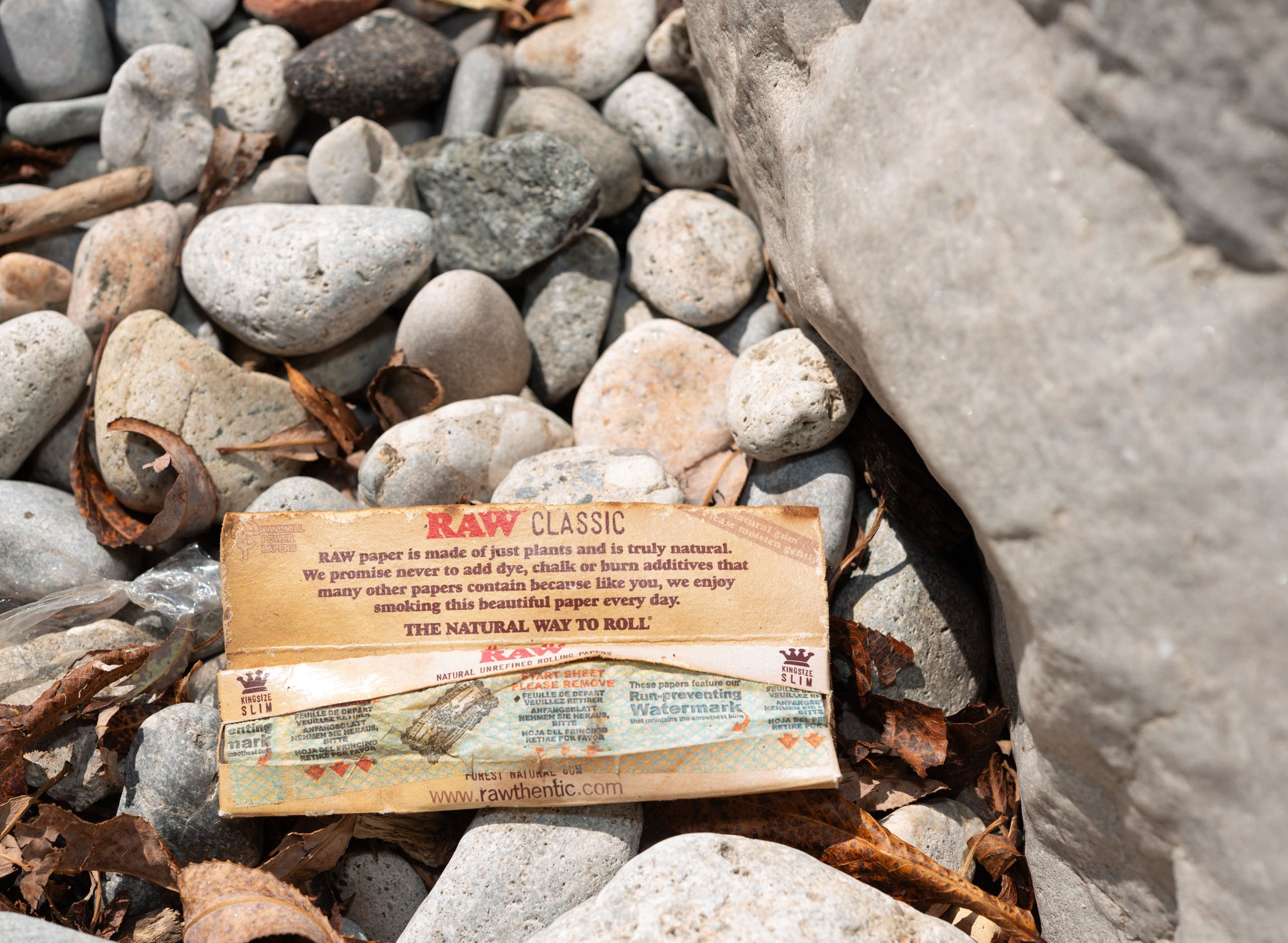
compliance
Is It Safe to Smoke the Warning Paper in RAW Rolling Papers?
Table of Contents
What Is the Warning Paper in RAW Rolling Papers?
Composition and Safety Concerns
RAW's Official Stance on Warning Papers
Better Alternatives to Smoking Warning Papers
User Experiences and Reports
Safety Recommendations for RAW Paper Users
Is It Safe to Smoke the Warning Paper in RAW Rolling Papers?Many RAW rolling paper users have wondered if they can smoke the warning paper found in RAW packs when they run out of regular rolling papers. This question appears frequently in smoking communities, with curious users asking: can you smoke the warning paper in RAW pack? While the impulse to use every available resource is understandable, there are important safety and quality considerations to address before attempting to smoke these warning inserts.What Is the Warning Paper in RAW Rolling Papers?Every pack of RAW rolling papers contains a warning paper that provides legal disclaimers, usage instructions, and brand information. These papers are typically a different color or texture from the actual rolling papers and serve primarily as informational inserts rather than smoking materials.According to comprehensive guides on RAW papers, the actual rolling papers are specifically engineered for smoking, while warning papers serve a completely different purpose. The warning papers are designed to communicate important information to consumers, not as smoking accessories.Composition and Safety ConcernsThe composition of warning papers differs significantly from rolling papers in several important ways:
Ink content: Warning papers contain printed text with inks that are not designed to be combusted and inhaled
Paper quality: They are typically made from standard paper rather than the specialized hemp, rice, or flax materials used in rolling papers
Chemical treatments: Warning papers may contain chemicals used in standard paper production that could be harmful when burned and inhaled
Thickness: They are generally thicker than rolling papers, potentially burning hotter and more unevenly
If you're wondering can you smoke RAW warning paper, the answer involves understanding these differences. RAW rolling papers themselves are designed specifically for smoking, with controlled burning rates and minimal additives.Highlight: Warning papers contain inks, potential chemical treatments, and paper materials not designed for safe combustion and inhalation.RAW's Official Stance on Warning PapersRAW, as a company focused on natural smoking products, has not officially endorsed smoking their warning papers. Their business model centers on providing high-quality, purpose-made rolling papers and smoking accessories that meet specific safety standards.The company invests considerable resources in developing papers specifically for smoking. As explored in this guide to RAW papers, the brand emphasizes natural ingredients and specialized manufacturing processes for their actual smoking products.For those wondering can you use the warning paper in RAW papers for smoking, the manufacturer's implicit stance through their product design suggests it's not an intended use.Better Alternatives to Smoking Warning PapersRather than risking your health by smoking warning papers, consider these safer alternatives:Pre-Rolled OptionsFor convenience without the need for rolling papers, pre-rolled cones in various sizes offer a ready-to-fill solution that eliminates the need to improvise with warning papers. These professionally manufactured cones ensure a consistent and safe smoking experience.Proper PlanningThe best approach is to keep an adequate supply of proper rolling papers on hand. Purchasing RAW papers in bulk can prevent situations where you might consider using warning papers out of desperation.Emergency AlternativesIn a true emergency, there are better alternatives than warning papers, including:
Bible pages (without ink, though this remains controversial)
Corn husks (traditional natural alternative)
Rolling paper alternatives specifically designed for smoking
Empty cigarette tubes
Each of these alternatives presents its own considerations, but they generally pose fewer known risks than smoking ink-covered warning papers.User Experiences and ReportsAnecdotal reports from users who have tried smoking warning papers vary widely. Some users who report "i smoked the RAW warning paper" describe harsh smoke, chemical tastes, and headaches afterward. Others claim to have experienced no immediate adverse effects.However, these subjective experiences should not be interpreted as safety endorsements. The potential risks of inhaling burned inks and paper treatments remain regardless of individual experiences. What happens if you smoke the warning RAW paper might not be immediately apparent but could involve exposure to harmful compounds.Most experienced smokers and rolling experts advise against the practice, recommending proper planning to avoid such situations.Safety Recommendations for RAW Paper UsersFor those who use RAW rolling papers regularly, following these recommendations can help ensure a safer experience:
Always keep spare rolling papers or pre-rolled cones on hand
Purchase papers in bulk to avoid running out
Learn to identify authentic RAW products to ensure you're getting genuine, safety-tested papers
Consider the full range of RAW accessories that might better suit your needs
When in doubt about any smoking material, prioritize your health and wait until proper papers are available
The question of whether can u smoke the warning RAW paper ultimately comes down to a risk assessment. While it may be physically possible, the potential health risks from inhaling burned inks and treated papers make it inadvisable. The minor convenience of using a warning paper is outweighed by the potential health concerns.Instead of risking your health with impromptu solutions, investing in quality rolling supplies and proper planning will provide a better experience. RAW offers numerous specialized products designed specifically for safe, enjoyable smoking experiences that eliminate the need to consider using warning papers.
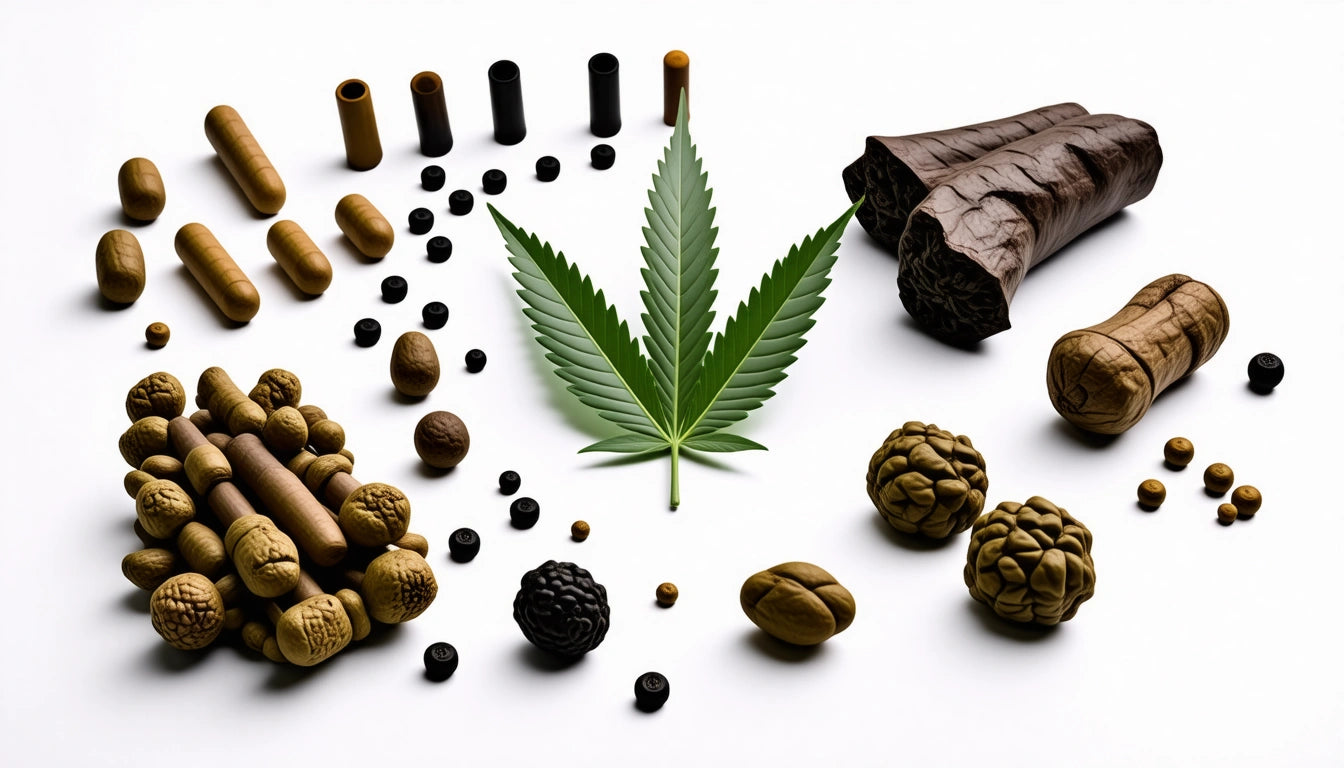
compliance
How Much THC Is in a Typical Joint?
Table of Contents
Understanding THC Content in Joints
Calculating THC Milligrams in a Joint
Factors Affecting THC Content in Joints
THC Per Puff: Breaking Down Consumption
Comparing Joints to Other Consumption Methods
Practical Dosing Tips for Joint Consumers
Understanding how much THC is in a joint is essential for both recreational users and medical patients seeking consistent dosing. While the answer varies based on several factors, including cannabis potency and joint size, having a general understanding of THC content helps consumers make informed decisions about their consumption.Understanding THC Content in JointsA typical joint contains approximately 0.3 to 1 gram of cannabis flower. The THC content in that flower can vary dramatically depending on the strain and growing conditions. Modern cannabis strains commonly contain between 15% to 25% THC by weight, though some premium strains may reach 30% or higher.According to research on joint milligram content, the average joint in legal markets contains approximately 60-150mg of THC, assuming average potency cannabis. This wide range reflects the significant variation in both joint size and cannabis potency available to consumers.Calculating THC Milligrams in a JointTo determine how many mg of THC is in a joint, you need to know both the weight of cannabis used and its THC percentage. The formula is straightforward:THC (mg) = Weight of cannabis (mg) × THC percentageFor example:
A 0.5g joint using 20% THC cannabis contains: 500mg × 0.20 = 100mg THC
A 0.7g joint using 15% THC cannabis contains: 700mg × 0.15 = 105mg THC
A 1g joint using 25% THC cannabis contains: 1000mg × 0.25 = 250mg THC
It's worth noting that studies on joint content suggest that the average joint size in the United States is closer to 0.32g, which would yield approximately 48-80mg THC for average potency cannabis.Highlight: The average joint contains between 60-150mg of THC, though this varies widely based on the size of the joint and the potency of the cannabis used.Factors Affecting THC Content in JointsCannabis Potency VariationsModern cultivation techniques have dramatically increased the potency of cannabis over the past few decades. While cannabis from the 1970s averaged around 3-5% THC, today's commercial strains routinely exceed 20%. This means that a joint rolled today likely contains significantly more THC than one rolled with the same amount of cannabis decades ago.Joint Size and Rolling TechniqueThe amount of cannabis used in a joint varies considerably based on personal preference and rolling technique. Standard measurements indicate that pre-rolled joints in dispensaries typically contain between 0.5g and 1g of cannabis, though some specialty products may contain more.Combustion EfficiencyNot all THC in a joint makes it into the user's system. During combustion, a significant portion of THC is destroyed by heat or lost in sidestream smoke. Research suggests that only about 20-37% of the total THC content is actually inhaled, with even less being absorbed into the bloodstream.THC Per Puff: Breaking Down ConsumptionFor those wondering how much THC in one puff of a joint, the answer depends on several variables including puff volume, duration, and the joint's burning characteristics. As a rough estimate, if a 100mg THC joint is consumed in 10 equal puffs, each puff would deliver approximately 10mg of THC, though absorption efficiency varies.Proper storage is essential for maintaining potency. Using secure storage containers with child-resistant lids not only keeps cannabis products fresh but also ensures they remain safely out of reach of children, a critical safety consideration for responsible consumers.Comparing Joints to Other Consumption MethodsWhen comparing joints to other consumption methods, it's important to understand the differences in bioavailability and onset time. Research comparing edibles to joints shows that inhaled cannabis typically has a bioavailability of 10-35%, while edibles have much lower bioavailability at 4-12%.This means that 10mg of THC consumed in a joint will produce different effects than 10mg consumed in an edible. Joints provide faster onset (within minutes) but shorter duration (1-3 hours), while edibles take longer to take effect (30-90 minutes) but last significantly longer (4-8 hours).Practical Dosing Tips for Joint ConsumersFor those concerned about precise dosing, consider these practical approaches:
Start with smaller joints (0.3-0.5g) if you're sensitive to THC
Consider using a one-hitter or pipe for more controlled consumption
Take fewer, smaller puffs and wait between them to gauge effects
Select lower-THC cannabis strains (10-15%) for milder effects
Mix CBD-rich flower with THC-rich flower to moderate the high
Understanding how long effects last is also crucial for planning consumption. Effects typically peak within 30 minutes of smoking and may last 1-3 hours, though residual effects can persist longer.For those concerned about drug testing, be aware that even a single joint can result in a positive test, with detection times varying based on frequency of use and individual metabolism.Future of THC Measurement and Consumption StandardsAs cannabis legalization expands, we're likely to see more standardized measurement and labeling of THC content in pre-rolled joints. Similar to how alcohol content is clearly labeled on beverages, cannabis products are increasingly providing detailed cannabinoid profiles to help consumers make informed choices.The future may also bring more sophisticated consumption tools that allow for precise dosing of inhaled cannabis, moving beyond the relatively imprecise nature of joint smoking. For now, understanding the basic principles of how to calculate THC content in your joint remains the best approach to responsible consumption.Whether you're an occasional user or a regular consumer, knowing how many mg of THC is in your joint helps ensure a predictable and enjoyable experience while minimizing unwanted effects from overconsumption.
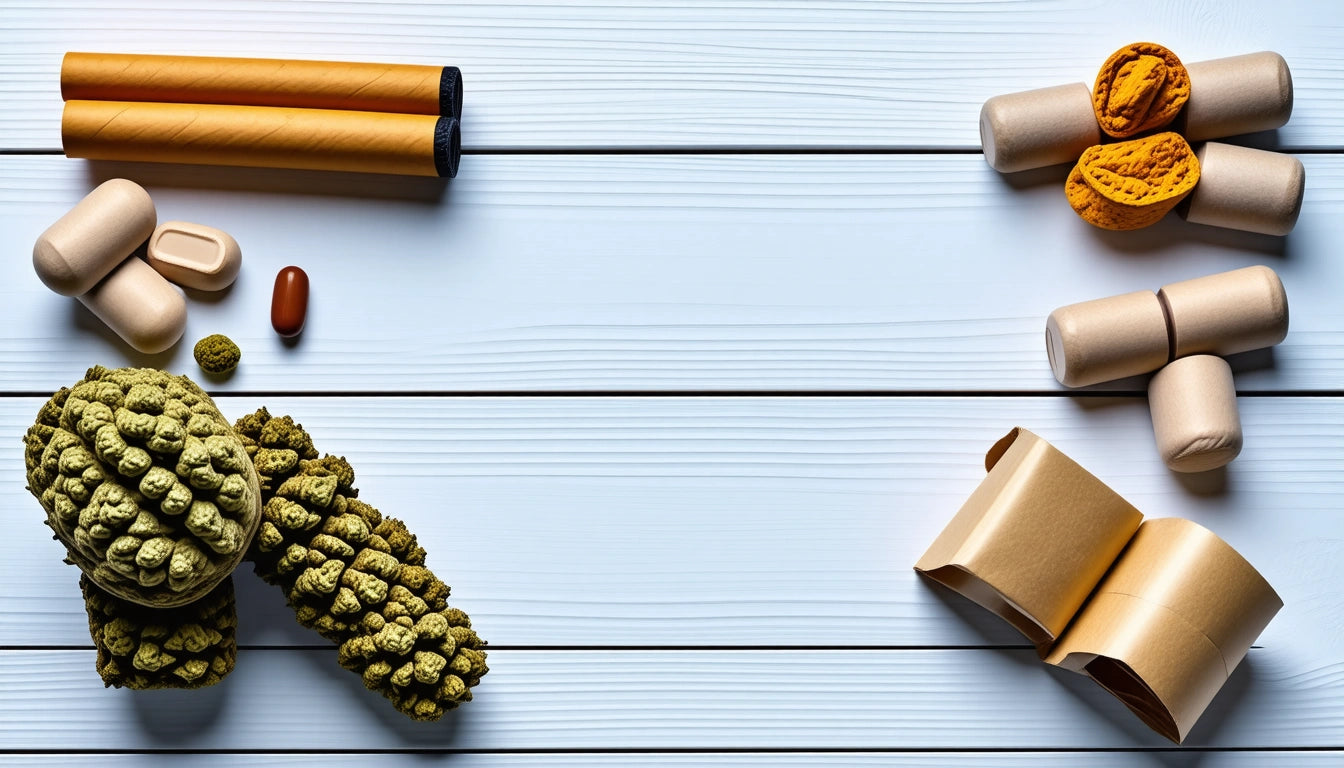
flower
Do You Need a Humidor for Storing Pre-Rolls?
Table of Contents
Understanding Pre-Roll Storage Needs
Traditional Humidors vs. Cannabis-Specific Solutions
Alternative Storage Methods
Humidity Control Options
Best Practices for Long-Term Storage
Pre-rolls offer convenience and consistency for cannabis consumers, but their quality can deteriorate quickly without proper storage. Many consumers wonder, "Do I need a humidor for my pre rolls?" While traditional cigar humidors might seem like an obvious solution, cannabis has unique storage requirements that differ from tobacco products.Understanding Pre-Roll Storage NeedsPre-rolls face several challenges during storage that can affect their quality, potency, and overall experience:
Moisture loss leading to harsh smoke
Terpene evaporation affecting flavor and effects
Cannabinoid degradation reducing potency
Mold growth if stored in overly humid conditions
According to experts on pre-roll shelf life, properly stored pre-rolls can maintain their quality for up to six months, while poorly stored ones might degrade within weeks.The Ideal EnvironmentCannabis pre-rolls thrive in environments with:
Relative humidity between 59-63%
Temperature around 70 °F (21 °C)
Protection from light, especially UV rays
Air-tight sealing to preserve terpenes
This specific humidity range differs from cigars, which typically prefer 68-72% relative humidity. This key difference makes traditional cigar humidors potentially problematic for cannabis storage without modifications.Traditional Humidors vs. Cannabis-Specific SolutionsTraditional wooden cigar humidors present several challenges when repurposed for cannabis:
Cedar wood can impart unwanted flavors to cannabis
Most are designed for higher humidity levels than cannabis requires
They may not provide adequate odor control
Many lack UV protection features
Cannabis-specific humidors address these concerns with features like:
Neutral materials that don't affect flavor
Calibrated humidity systems for cannabis-appropriate levels
Enhanced odor control and UV protection
Specialized compartments for pre-rolls and other products
Highlight: While traditional cigar humidors maintain 68-72% humidity, cannabis pre-rolls require a lower 59-63% range to prevent mold while maintaining freshness.Alternative Storage MethodsIf you're not ready to invest in a cannabis-specific humidor, several effective alternatives exist:Airtight Glass ContainersMason jars and specialized cannabis storage jars provide excellent short-term storage when kept in a cool, dark place. They're particularly effective when combined with humidity control packs.Pre-Roll TubesMany pre-rolls come in plastic or glass tubes that provide decent short-term protection. These can be further enhanced with humidity control solutions for longer storage.Specialized Pre-Roll CasesDesigned specifically for on-the-go storage, these cases offer protection from crushing and some environmental factors. As discussed in this guide on traveling with pre-rolls, proper cases are essential for maintaining quality during transport.Humidity Control OptionsRegardless of your storage container choice, controlling humidity is crucial for preserving pre-roll quality. Several options exist:Humidity Control PacksThese two-way humidity control solutions maintain optimal moisture levels by either releasing or absorbing moisture as needed. We offer humidity control packs that maintain ideal cannabis storage conditions by regulating moisture to the perfect level, ensuring your pre-rolls stay fresh without becoming too dry or damp.Humidity BeadsSimilar to control packs but reusable, these beads can be "recharged" with distilled water when they dry out.DIY SolutionsFor short-term storage, a small piece of orange peel or a fresh lettuce leaf can add moisture, though these methods require careful monitoring to prevent mold and aren't recommended for valuable products.As explained in this comprehensive guide on pre-roll techniques, proper humidity not only preserves freshness but also ensures an even burn when smoking.Best Practices for Long-Term StorageFor those looking to store pre-rolls for extended periods, consider these best practices:
Store in a cool, dark place away from direct light
Use humidity control packs and replace them according to manufacturer guidelines
Consider vacuum-sealing for very long-term storage
Regularly check for signs of mold or degradation
Keep different strains separated to preserve their unique terpene profiles
Label containers with purchase dates to track freshness
Understanding pre-roll composition and safety considerations can help inform better storage decisions based on the specific ingredients and construction of your products.Storage Recommendations for Different Consumer TypesThe ideal storage solution depends on your consumption habits:Occasional UsersIf you only enjoy pre-rolls occasionally, invest in a small airtight container with a humidity control pack. This simple setup provides adequate protection without significant investment.Regular ConsumersFor those who maintain a modest collection, a cannabis-specific storage box with multiple compartments and built-in humidity control offers convenience and proper preservation.ConnoisseursIf you maintain an extensive collection of premium pre-rolls, a dedicated cannabis humidor with precise humidity and temperature control justifies the investment by preserving the quality of your valuable products.Remember that proper storage not only maintains quality but also ensures a safer experience, as outlined in this guide on properly smoking pre-rolls.Whether you choose a specialized humidor or a simpler storage solution, the key factors remain consistent: control humidity, block light, maintain stable temperature, and prevent air exposure. With these principles in mind, you can preserve the quality of your pre-rolls and enjoy them as intended, whenever you're ready.
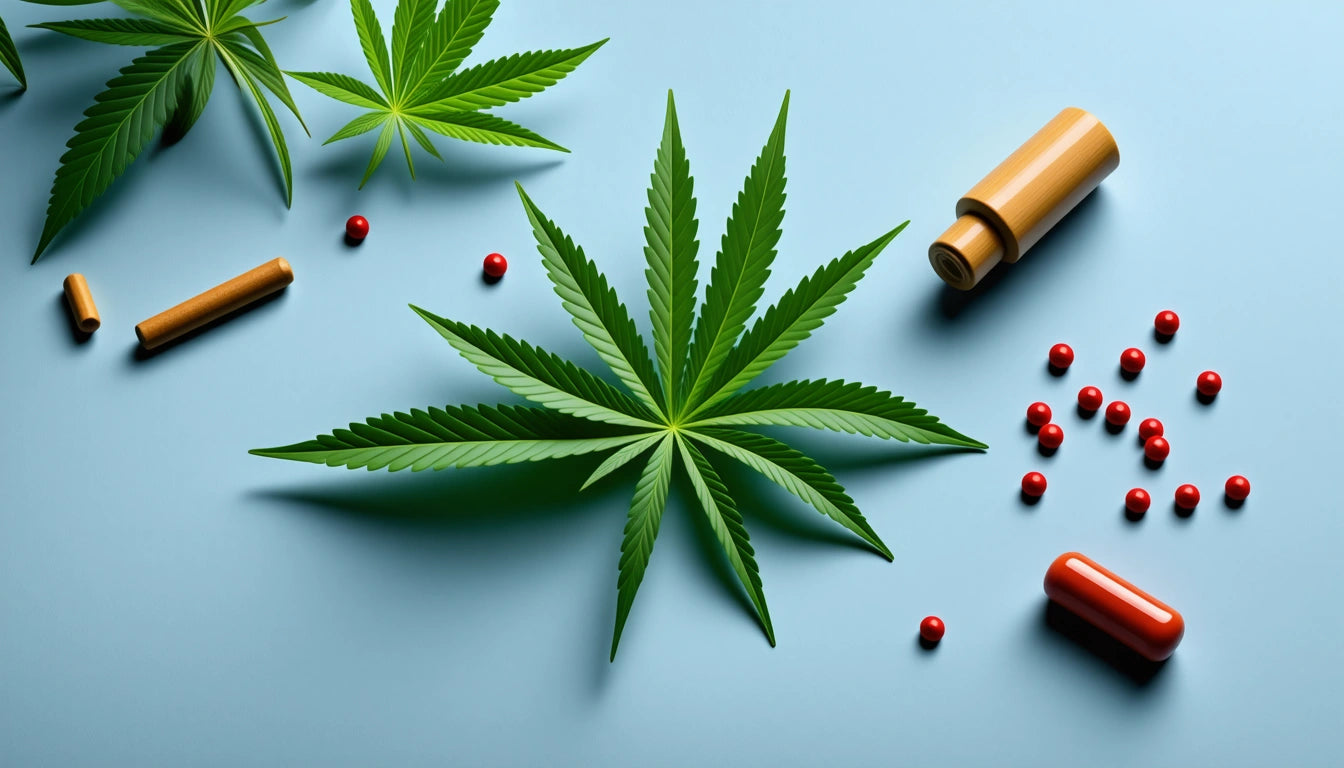
flower
Can You Contract Herpes from Sharing a Joint?
Table of Contents
Understanding Herpes Transmission
Risk Factors When Sharing Joints
Prevention Strategies for Cannabis Users
Alternatives to Joint Sharing
Responsible Cannabis Consumption Practices
The question of whether you can catch herpes from sharing a joint is increasingly common as cannabis consumption becomes more mainstream. While cannabis itself offers various benefits, the social aspect of passing joints creates potential health considerations that consumers should understand.Understanding Herpes TransmissionHerpes simplex virus (HSV) exists in two primary forms: HSV-1, which typically causes oral herpes, and HSV-2, which generally causes genital herpes. HSV-1 is highly contagious and spreads through direct contact with infected saliva or sores.When someone with an active oral herpes outbreak (cold sore) shares a joint, the virus can potentially transfer to the joint's mouthpiece. The next person who uses that joint may then be exposed to the virus through their lips or mouth.How Herpes SpreadsFor herpes transmission to occur, several factors must align:
Direct contact with an infected area
Presence of the virus in sufficient quantity
A route of entry (typically broken skin or mucous membranes)
Viable virus (herpes cannot survive long outside the body)
The risk increases substantially when sharing with someone who has visible cold sores or is experiencing the tingling, burning sensation that precedes an outbreak.Risk Factors When Sharing JointsSeveral elements influence the likelihood of contracting herpes from a shared joint:Moisture and Saliva TransferJoints often become moist from saliva during smoking. This moisture creates an ideal transfer medium for the herpes virus. As described in this guide on joint smoking methods, the traditional puff-and-pass approach maximizes saliva contact.Active OutbreaksThe risk is highest when sharing with someone experiencing an active herpes outbreak. However, asymptomatic shedding (when someone transmits the virus without visible symptoms) is also possible, though less likely.Micro-AbrasionsSmall cuts or abrasions around the mouth increase transmission risk by providing entry points for the virus. Hot smoke can sometimes cause minor irritation to lip tissue, potentially creating these entry points.Highlight: While the risk of contracting herpes from sharing a joint exists, it increases significantly when sharing with someone who has an active cold sore outbreak.Prevention Strategies for Cannabis UsersTo minimize health risks while enjoying cannabis socially, consider these preventive measures:Personal Joint TipsUsing personal joint tips or mouthpieces creates a barrier between your mouth and the shared portion of the joint. These are particularly important when smoking and preserving joints in social settings.Awareness and CommunicationOpen communication about active cold sores helps everyone make informed decisions. If you have an active outbreak, consider abstaining from sharing or using one of the alternatives discussed below.Hand HygieneWashing hands before handling joints reduces the risk of transferring pathogens from hands to the joint. This is especially important when rolling joints, as the paper will come in contact with multiple users' mouths.For commercial operations, using precise measuring equipment to prepare consistent products helps minimize handling and associated contamination risks.Alternatives to Joint SharingSeveral alternatives exist for social cannabis consumption that minimize direct contact:Personal JointsEach person can roll their own joint using the same cannabis. This eliminates sharing entirely while maintaining the social experience. Learning about proper rolling techniques can help everyone enjoy their personal joints.Alternative Consumption MethodsConsider using vaporizers with disposable or cleanable mouthpieces, or edibles that eliminate the need for sharing altogether. These methods also offer different experiences and effects compared to traditional smoking.Puff-Puff-Pass with PrecautionsIf joint sharing is preferred, implement a system where each person has their own rolling paper to hold the joint, creating a barrier between mouth and shared surface.Responsible Cannabis Consumption PracticesBeyond herpes concerns, responsible consumption includes broader health considerations:Understanding how cannabis affects your body helps make informed decisions about frequency and quantity. Similarly, knowing how to properly store joints prevents contamination and preserves quality.The cannabis community continues to evolve toward more hygienic practices. As knowledge about potential health risks spreads, many consumers are adopting personal consumption tools and more mindful sharing practices.While the risk of contracting herpes from sharing a joint exists, it's manageable through awareness and simple precautions. By understanding transmission mechanisms and implementing basic preventive measures, cannabis enthusiasts can continue to enjoy social consumption while minimizing health risks.
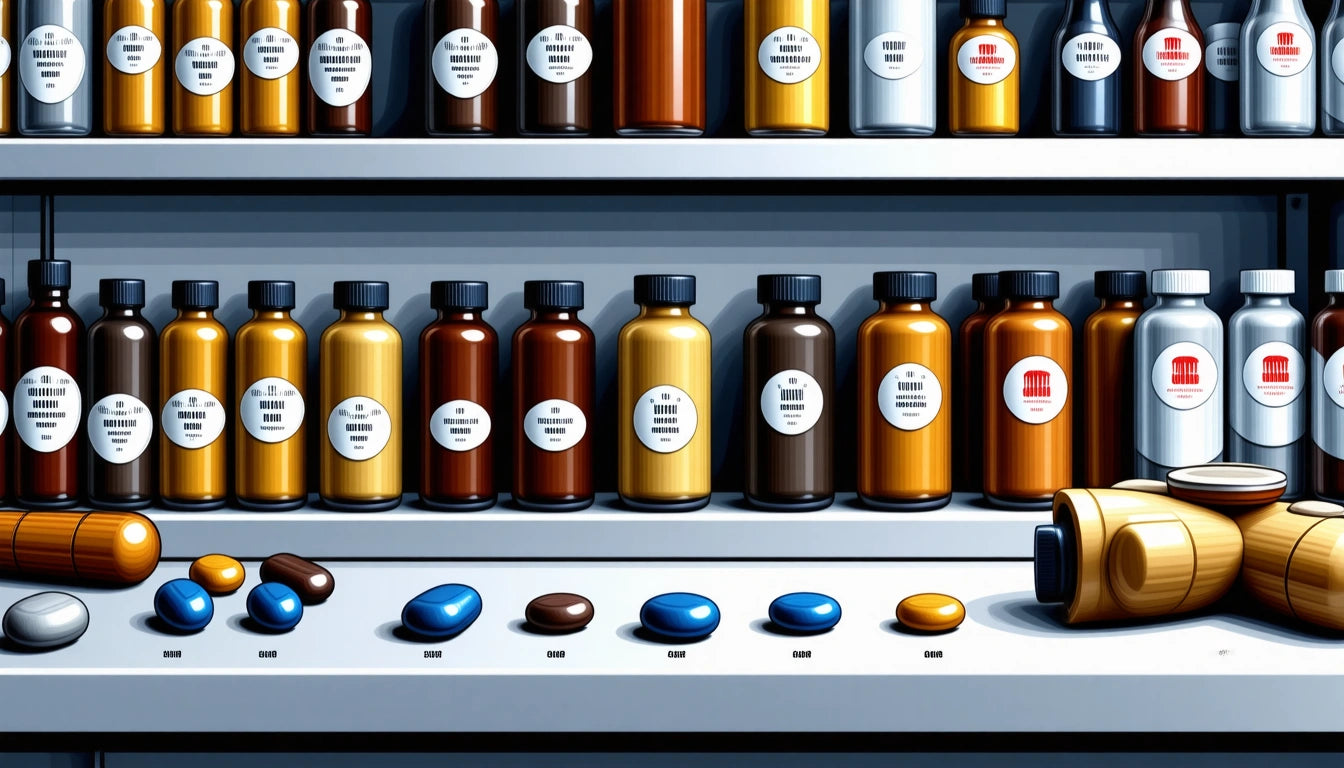
business tips
How Long Do Joints Last Before They Expire?
Table of Contents
Shelf Life Factors: What Affects How Long Joints Last
Proper Storage Techniques for Maximum Longevity
Signs Your Joint Has Expired: What to Look For
Extending Shelf Life: Advanced Preservation Methods
Industry Best Practices for Joint Preservation
Cannabis consumers frequently ask how long joints last before they expire or lose potency. While pre-rolled joints don't have official expiration dates like food products, they do have a shelf life that affects their quality, potency, and smoking experience. Understanding the factors that influence how long a joint is good for can help you preserve your pre-rolls and ensure the best possible experience.Shelf Life Factors: What Affects How Long Joints LastSeveral key factors determine how long joints remain fresh and potent:Moisture ContentProperly cured cannabis contains about 10-12% moisture. Too much moisture promotes mold growth, while too little causes the flower to become brittle and harsh when smoked. This delicate balance significantly impacts how long joints last.Exposure to ElementsThe primary enemies of cannabis preservation are:
Light: UV rays degrade cannabinoids, especially THC
Air: Oxygen exposure accelerates terpene evaporation and cannabinoid degradation
Heat: Temperatures above 70 °F speed up degradation processes
Humidity: Fluctuations can cause moisture problems
Initial QualityProperly cured cannabis will naturally last longer than poorly processed flower. The curing process, which removes excess moisture while preserving essential oils, creates the foundation for longevity.Highlight: Under ideal storage conditions, pre-rolled joints typically maintain optimal freshness for 6 months to 1 year, though potency gradually decreases over time.Proper Storage Techniques for Maximum LongevityHow you store your joints dramatically affects how long they remain good for consumption. Proper joint storage techniques can extend shelf life significantly.Container SelectionThe best containers for storing joints are:
Glass jars: Airtight and non-porous
Doob tubes: Portable protection from crushing and elements
Humidity-controlled containers: Maintain optimal moisture levels
For businesses managing larger inventories, specialized filling and packaging equipment can help maintain consistency and freshness during the production process, ensuring joints start their shelf life in optimal condition.Temperature and LocationStore joints in a cool, dark place with stable temperature. The ideal storage temperature range is 60-70 °F (15-21 °C). Avoid:
Refrigerators (humidity fluctuations)
Hot cars or direct sunlight
Areas near appliances that generate heat
Signs Your Joint Has Expired: What to Look ForWhile joints don't technically "expire," several indicators suggest they're past their prime:Visual IndicatorsWatch for:
Discoloration (browning or yellowing)
Visible mold (white, fuzzy spots)
Excessive dryness and crumbling
Aroma ChangesFresh cannabis has a vibrant, distinct smell. As joints age, you may notice:
Diminished aroma intensity
Hay-like or musty smells
Complete absence of smell
Smoking ExperienceExpired joints typically provide:
Harsher smoke
Reduced flavor profile
Diminished effects
Uneven burning
Understanding how long the effects of a joint typically last can help you determine if your stored joints have lost potency.Extending Shelf Life: Advanced Preservation MethodsFor those serious about maximizing how long joints remain fresh, consider these advanced techniques:Humidity Control PacksThese two-way humidity control products maintain optimal moisture levels (typically 58-62% relative humidity) to prevent joints from becoming too dry or too moist.Vacuum SealingFor long-term storage, vacuum-sealed containers remove oxygen that would otherwise degrade cannabinoids and terpenes. This method can extend shelf life significantly but requires specialized equipment.Multiple Barrier ProtectionUsing a layered approach provides extra protection:
Place joints in airtight glass containers
Add humidity control packs
Store containers in a cool, dark cabinet
Consider using UV-protective containers for additional light protection
These methods are particularly important when considering the cost of joints and wanting to protect your investment.Industry Best Practices for Joint PreservationCannabis industry professionals have developed standard practices to ensure joints remain fresh from production to consumption:Production DatingMany producers now include packaging dates, allowing consumers to track freshness. While not an expiration date, this information helps gauge how long a joint has been stored.Nitrogen FlushingSome premium pre-roll manufacturers use nitrogen flushing to replace oxygen in packaging, significantly extending shelf life by preventing oxidation.Consumer EducationBrands increasingly provide storage recommendations with their products, acknowledging that proper storage after purchase is crucial for maintaining quality. Education about joint rolling and smoking often includes storage guidance.Understanding how long joints last is particularly important for medical cannabis patients who need consistent potency and may store medication for extended periods. With proper storage techniques, joints can remain fresh and effective for 6-12 months, though gradual potency loss is inevitable over time.Remember that storage considerations should also include safety concerns, especially in households with children or pets. Always store cannabis products securely and responsibly, regardless of how long you plan to keep them.
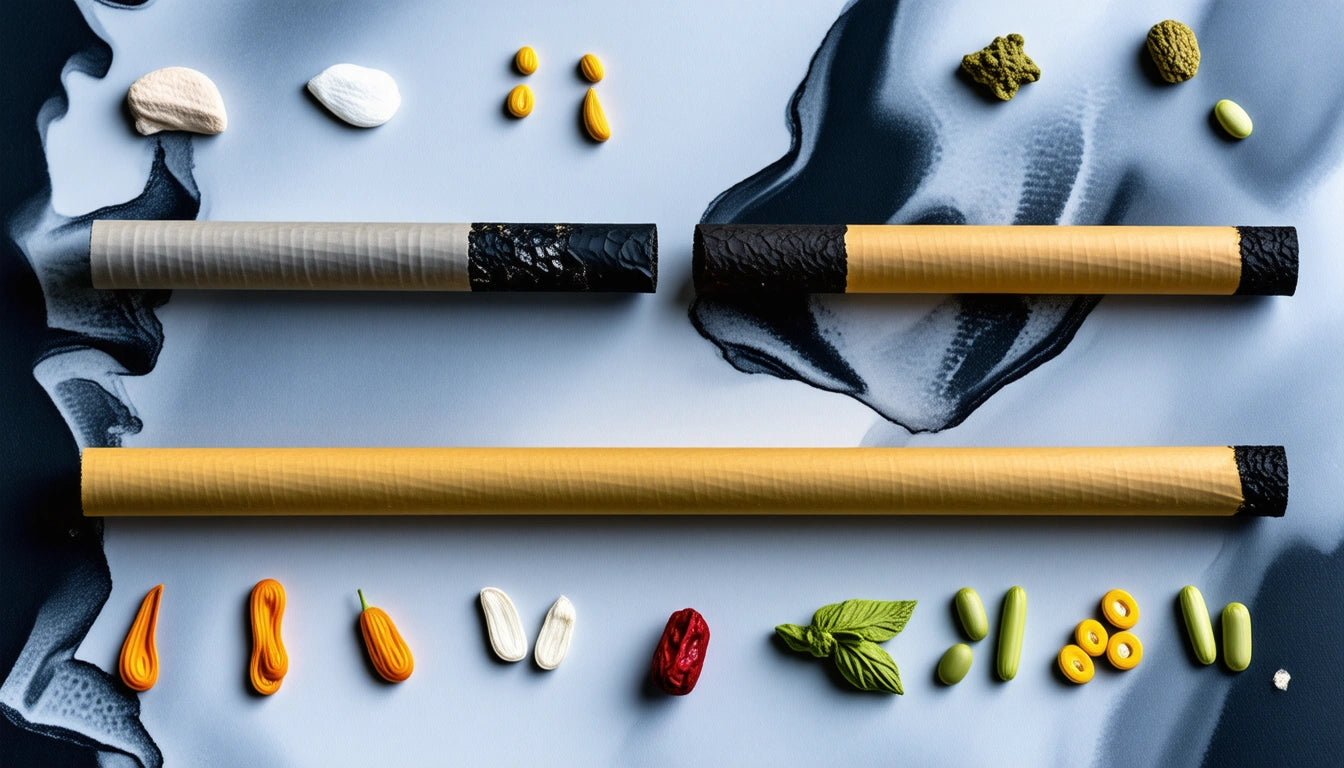
flower
Blunts vs. Joints: Which Is Better?
Table of Contents
Fundamental Differences Between Blunts and Joints
Flavor Experience: How Blunts and Joints Compare
Burn Rate and Duration Comparison
Health Considerations for Both Methods
Social Aspects and Cultural Significance
Rolling Techniques and Equipment
Making an Informed Choice Between Blunts or Joints
The debate between blunts or joints has been ongoing in cannabis culture for decades. Both methods offer unique experiences, but understanding their differences is crucial for making an informed choice that aligns with your preferences, health considerations, and social context.Fundamental Differences Between Blunts and JointsJoints are typically rolled using thin, lightweight rolling papers made from materials like hemp, rice, or flax. They contain only cannabis and sometimes a paper filter or tip. Blunts, on the other hand, utilize tobacco leaf wrappers or cigar wraps that have been hollowed out and refilled with cannabis.This fundamental difference in wrapping material creates distinct experiences in terms of flavor, burn time, and effects. Joints offer a purer cannabis experience, while blunts introduce tobacco elements that modify both taste and physical effects.Flavor Experience: How Blunts and Joints CompareJoint Flavor ProfileJoints allow the natural terpene profile of cannabis to shine through with minimal interference. High-quality rolling papers add little to no flavor, making joints the preferred choice for cannabis connoisseurs who want to experience the full flavor spectrum of specific strains.Blunt Flavor CharacteristicsBlunts deliver a more complex flavor profile due to the tobacco leaf wrapper. The natural sweetness and sometimes flavored tobacco wraps blend with cannabis terpenes to create a distinctive smoking experience. Many enthusiasts appreciate this combination, particularly when paired with certain strains that complement the tobacco notes.Highlight: The choice between blunts or joints often comes down to whether you prefer the pure cannabis flavor of joints or the tobacco-cannabis fusion offered by blunts.Burn Rate and Duration ComparisonBlunts typically burn slower than joints due to the thicker tobacco leaf wrapper. This slower burn rate makes blunts last longer, sometimes up to 30 minutes or more depending on size. Joints, with their thinner paper, generally burn faster and may last 10-15 minutes.For commercial operations or dispensaries preparing pre-rolls, specialized filling equipment can significantly improve efficiency and consistency when preparing either format in larger quantities, ensuring a uniform experience for customers regardless of their preference for blunts or joints.Health Considerations for Both MethodsWhen comparing joints or blunts from a health perspective, several factors come into play. Understanding these health implications can help consumers make more informed decisions.
Joints eliminate tobacco exposure, reducing nicotine intake and associated risks
Blunts contain nicotine from the tobacco leaf wrapper, which can be addictive
Tobacco in blunts may intensify the high through chemical interactions
Paper filters in joints may reduce some particulate matter
Both methods involve combustion, which produces tar and carcinogens
For those concerned about health impacts, joints generally present fewer risks due to the absence of tobacco and nicotine. However, both methods involve inhaling smoke, which carries inherent health considerations.Social Aspects and Cultural SignificanceThe choice between blunts or joints often reflects cultural preferences and social contexts. Joints have historically been associated with cannabis purists and the counterculture movement, while blunts gained popularity through hip-hop culture and urban communities beginning in the 1980s.In social settings, blunts may be preferred for group sessions due to their longer burn time and durability. Joints, being quicker to consume, might be more suitable for solo sessions or when discretion is valued.Rolling Techniques and EquipmentRolling techniques differ significantly between the two formats. Mastering joint rolling typically involves working with delicate papers that require a gentle touch and precision. Blunts demand a different approach, often starting with splitting a cigar, removing the tobacco, and then refilling and resealing the wrapper.For those new to rolling, joints may present a steeper learning curve due to the fragility of rolling papers. Blunts, while requiring specific techniques for preparing the wrapper, can be more forgiving during the actual rolling process due to the sturdier material.Both methods can be enhanced with various tools:
Grinders for consistent cannabis texture
Rolling trays to contain material
Filter tips for joints
Humidifier packs to maintain wrapper flexibility for blunts
Making an Informed Choice Between Blunts or JointsThe decision between blunts and joints ultimately depends on personal preference, considering factors like flavor preference, desired duration, health concerns, and social context. Many cannabis enthusiasts enjoy both methods, selecting one over the other based on the specific occasion.Comparing different smoking methods can help identify which best suits your needs. For those seeking the purest cannabis flavor and avoiding nicotine, joints typically offer the better experience. If you prefer a longer-lasting session with the distinctive flavor that tobacco leaf provides, blunts might be your preferred choice.Whichever method you choose, understanding the fundamental differences ensures you can make an informed decision that enhances your cannabis experience while aligning with your personal preferences and priorities.
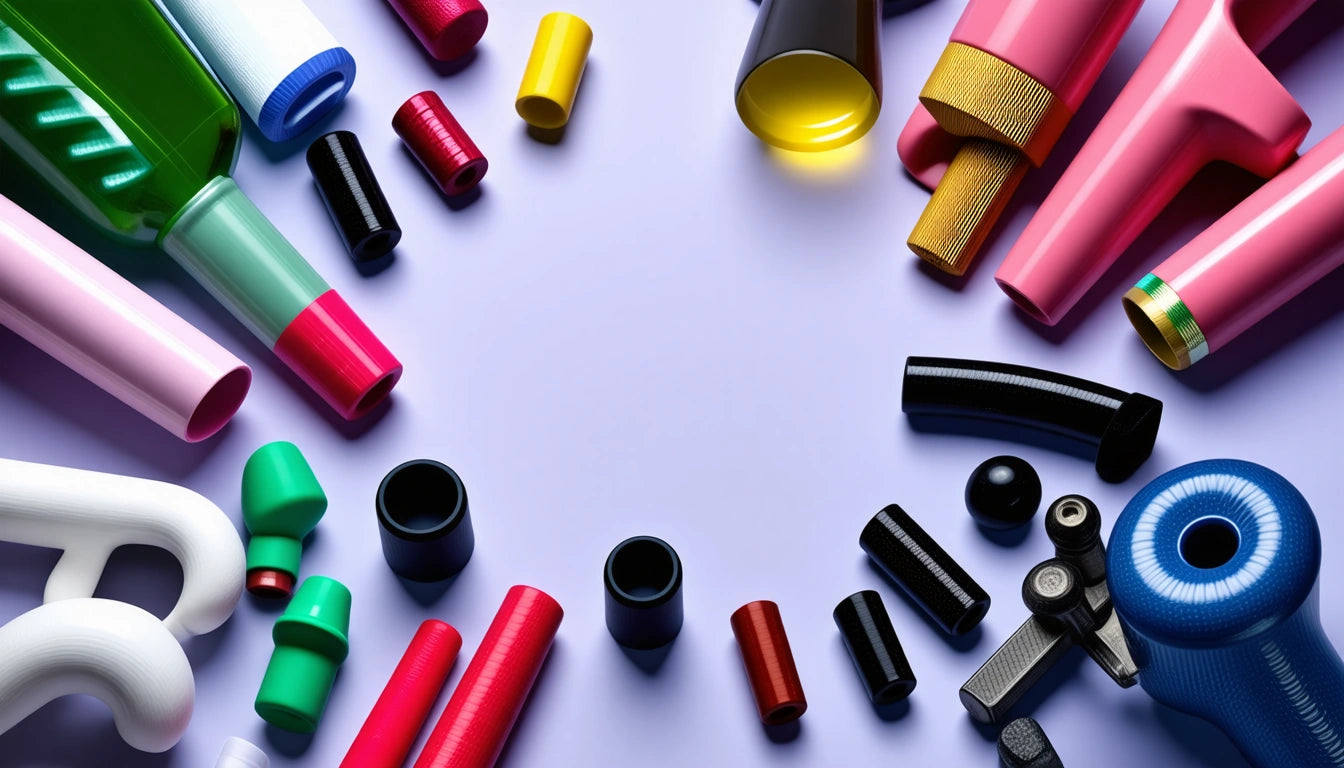
flower
Do Pipes Provide a Stronger High Than Joints?
Table of Contents
Understanding Consumption Methods: Pipes vs. Joints
Combustion Efficiency and Cannabinoid Delivery
Filtration Factors: How They Impact Your Experience
Temperature Considerations and Their Effect on Potency
Personal Factors That Influence Your High
Practical Recommendations for Optimal Experiences
When it comes to cannabis consumption, the age-old debate between pipes and joints continues to spark curiosity among both newcomers and experienced users. The question of whether pipes provide a stronger high than joints involves multiple factors including combustion efficiency, filtration, temperature control, and personal physiology. This comprehensive guide examines the science behind these consumption methods to help you understand which might deliver a more potent experience.Understanding Consumption Methods: Pipes vs. JointsPipes and joints represent two of the most traditional cannabis consumption methods, each with distinct characteristics that affect the overall experience. According to this detailed comparison, pipes typically consist of a bowl for loading ground flower and a chamber through which smoke travels, while joints are simply rolling papers filled with ground cannabis.The primary differences between these methods include:
Combustion rate and temperature
Filtration capabilities
Smoke volume per inhalation
Material efficiency
Portability and discretion
Combustion Efficiency and Cannabinoid DeliveryContinuous vs. Intermittent BurningJoints burn continuously once lit, even when you're not actively inhaling. This continuous combustion can waste significant amounts of THC and other cannabinoids. Many consumers who store larger quantities of flower in protective packaging prefer pipes for their on-demand nature, which allows for more controlled consumption with less waste.Burn Rate ComparisonStudies suggest that joints can lose up to 40-50% of cannabinoids to sidestream smoke (smoke that rises from the burning tip when not being inhaled). Pipes, by contrast, typically lose only 20-30% when properly used, making them potentially more efficient delivery systems.Highlight: Pipes generally deliver more cannabinoids per gram of cannabis compared to joints due to reduced sidestream loss and better combustion control.Filtration Factors: How They Impact Your ExperienceThe presence or absence of filtration significantly affects potency and smoothness of the inhaled smoke.Joint Filters and Their EffectsMany joints incorporate filters or tips that can remove some particulate matter but also potentially filter out some cannabinoids. This guide on joint filters explains how different filter materials can impact both the smoking experience and potency.Pipe Design ConsiderationsBasic pipes offer minimal filtration, delivering a more direct and potentially stronger hit. Water pipes (bubblers and bongs) provide water filtration that cools the smoke and removes some particulates, which can allow for larger inhalations but might slightly reduce certain compounds' bioavailability.Temperature Considerations and Their Effect on PotencyThe temperature at which cannabis burns directly impacts which compounds are activated and delivered to your system.Heat Management in PipesPipes allow for better temperature control through techniques like corner lighting (only igniting a portion of the bowl). This precision can help activate THC without destroying it through excessive heat, potentially resulting in more efficient cannabinoid delivery.Joint Combustion PatternsJoints typically burn at higher temperatures due to the continuous airflow and paper burning. Higher temperatures can degrade some cannabinoids before they're inhaled, potentially reducing potency per gram consumed.Personal Factors That Influence Your HighBeyond the consumption method itself, several personal factors significantly impact how high you feel:
Individual metabolism and endocannabinoid system
Tolerance levels and consumption history
Inhalation technique and breath control
Psychological expectations and setting
When comparing pipes and joints, these personal variables can sometimes outweigh the inherent differences between the devices themselves. As noted in this analysis of joint effects, the duration and intensity of a high depends on multiple factors beyond just the consumption method.Practical Recommendations for Optimal ExperiencesIf seeking maximum efficiency and potency from your cannabis experience, consider these evidence-based recommendations:For Pipe UsersUse proper grinding techniques to increase surface area and ensure even burning. Corner your bowl to preserve cannabinoids and extend your session. Clean your pipe regularly to prevent resin buildup that can affect flavor and potency.For Joint EnthusiastsOpt for slow-burning papers and proper rolling techniques to minimize sidestream waste. Consider comparing different consumption methods to find what works best for your specific needs. Use appropriate filter tips that balance filtration with cannabinoid preservation.While pipes generally offer better efficiency in delivering cannabinoids, the difference in perceived effects between pipes and joints often comes down to individual factors, consumption technique, and the specific cannabis being used. Both methods have their place in cannabis culture, with pipes typically offering slightly higher potency per gram consumed, while joints provide convenience and a traditional shared experience.

flower
Comparing 98mm Cones to 1 1/4 Rolling Papers: Which Is Better?
Table of Contents
Understanding the Basics: 98mm Cones vs 1 1/4 Papers
Capacity Comparison: How Much Can Each Hold?
Ease of Use: Convenience Factors
Burn Rate and Experience: Quality of Smoke
Cost Considerations: Budget Impact
Best Use Scenarios: When to Choose Each Option
Making Your Choice: Practical Recommendations
When it comes to cannabis consumption, the choice between pre-rolled 98mm cones and traditional 1 1/4 rolling papers can significantly impact your smoking experience. Both options have distinct advantages depending on your priorities, skill level, and consumption habits. This comparison breaks down the key differences to help you make an informed decision.Understanding the Basics: 98mm Cones vs 1 1/4 Papers98mm cones are pre-formed, conical rolling papers with a filter tip already attached. They typically measure 98mm in length, hence the name. On the other hand, 1 1/4 rolling papers are flat sheets measuring approximately 76-78mm in length and 45-48mm in width, requiring manual rolling and optional filter addition.The fundamental difference lies in their preparation: cones come ready to fill, while rolling papers require assembly skills. As highlighted in this guide on using and filling cones, pre-rolled options eliminate the learning curve associated with traditional rolling.Capacity Comparison: How Much Can Each Hold?A standard 98mm cone typically holds between 0.75g and 1g of ground flower, depending on how tightly it's packed. For precise measurements, many users rely on accurate digital scales designed specifically for cannabis to ensure consistent filling.In contrast, a 1 1/4 rolling paper generally accommodates 0.3g to 0.5g when rolled conventionally. However, experienced rollers can create various shapes and sizes, potentially matching or exceeding a cone's capacity.Highlight: While 98mm cones typically hold twice the capacity of standard 1 1/4 rolling papers, the actual amount depends on packing density and rolling technique.Ease of Use: Convenience FactorsPre-Rolled Cones
No rolling skills required
Consistent shape every time
Quick filling process
Compatible with cone filling machines for bulk preparation
For those interested in streamlining the process further, cone filling machines can significantly increase efficiency, especially for regular consumers or small businesses.1 1/4 Rolling Papers
More portable (flat packaging)
Greater control over size and shape
Typically less expensive per unit
Allows for creative rolling techniques
Burn Rate and Experience: Quality of SmokeThe conical shape of 98mm cones creates a natural airflow that often results in a slower, more even burn compared to cylindrical joints made with 1 1/4 papers. This design feature can enhance flavor preservation and reduce the need for relighting.Many consumers report that high-quality cones provide a smoother experience, particularly when paired with glass tips that further cool the smoke. The integrated filter in most cones also helps prevent plant material from being inhaled.Cost Considerations: Budget ImpactWhen evaluating cost-effectiveness, several factors come into play:Pre-rolled cones generally cost more per unit than individual rolling papers. According to this pricing guide for RAW cones, premium options can range from $0.50 to $1.50 per cone when purchased in smaller quantities.Rolling papers typically cost $1-3 per pack of 32-50 sheets, making the per-unit cost significantly lower. However, this calculation doesn't account for the additional cost of filters/tips or the potential waste from rolling mistakes.Best Use Scenarios: When to Choose Each OptionChoose 98mm Cones When:
You lack rolling skills or dexterity
Consistency is important to you
You're preparing for group sessions
Time efficiency is a priority
You prefer a larger capacity per unit
Choose 1 1/4 Rolling Papers When:
You enjoy the rolling ritual
Budget considerations are important
You want precise control over size and density
Portability is essential
You prefer smaller, personal-sized portions
For those interested in eco-friendly options, hemp cones offer a sustainable alternative that maintains the convenience of pre-rolled options.Making Your Choice: Practical RecommendationsThe 98mm cone vs 1 1/4 rolling paper debate ultimately comes down to personal preference and specific needs. Many consumers actually maintain both options in their collection to accommodate different situations.For beginners or those hosting gatherings, pre-rolled cones offer simplicity and consistency. The learning curve is minimal, and with options like RAW cones, quality is generally reliable.For purists, frequent consumers, or those looking to economize, traditional rolling papers provide versatility and value. The initial investment of time to learn proper rolling techniques can pay dividends in flexibility and cost savings over time.Many experienced consumers find that mastering both methods offers the best of both worlds, allowing them to choose the right tool for each occasion based on time constraints, group size, and personal mood.

